Text
What is the difference between LMSs in a B2B and B2C context?
With the pandemic pushing people and students to work and learn from home, the global learning management system (LMS) market size has seen tremendous growth. In 2021, it was valued at US$ 14.43 billion, and is projected to see growth to US$ 40.95 billion by 2029.
LMS is now being used by organizations of all sizes and kinds – from government agencies to traditional and e-learning-based institutions – because they not only improve methods of teaching but save time and money by allowing instructors and administrators to efficiently manage elements such as registration, logins, subscriptions, content, access communication, certifications, and more.
Related articles
Service Mesh: The best way to Encrypt East-West traffic in Kubernetes
How does a No-Code App Builder help enterprises?
Broadly divided, you have the B2B LMS, which is implemented within an organization for upskilling its own employees; and the B2C LMS, which is implemented by EdTech companies for subscription-based learning for the general public.
While the same at their core, here are the key differences between LMS-es used in a B2B context vs ones used for B2C.
B2B Learning Management Systems
Within an organization, LMS is used primarily for knowledge management (KM), meaning the gathering, sharing, and analysis of an organization’s knowledge in terms of resources, people skills, and so on. These vary according to an organization’s goals and strategies.
A typical B2B LMS would offer features like:
Customizable course plans:
The modular design of LMS allows for the flexibility of open-ended, self-paced, and blended courses based on what exactly is required of the employee
Custom learning paths:
LMS can be configured to incorporate various learning paths, sequential or non-sequential, as well to assign courses for each employee as per their needs
Tracking user results and comparison:
LMS can track sign-up rates, completion and drop-out rates, time spent on learning, etc.
There is less need for scale because a B2B LMS is restricted to the organization base. However, a B2B LMS usually needs to be integrated with multiple third-party content providers (MOOCs) unless they have fully custom content.
Examples of B2B LMS would be employee training to meet KPIs, upskilling, as well as onboarding. The LMS is also used to help train staff by providing access to training materials across various devices. These are interactive, which means that employees can give feedback as well to help employers understand how effective the training courses are.
B2C Learning Management Systems
This category of LMS has helped meet the increased demand for remote learning in terms of both quality and the sheer diversity and range of courses that can be made available. LinkedIn Learning, Udemy, and Coursera are some examples of B2C LMS.
This is more of an e-commerce-oriented social platform, where consumers can log on and subscribe, and pick courses from a catalog based on reviews and price, etc. The learning experience is similar to that of B2B LMS. For instance, it allows learning flexibility in the sense that personalized courses of any complexity and specialization and for any audience can be created.
Now, within this category, some B2C platforms are merely aggregators, while others create the content. Either way, the B2C LMS is open to every kind of user. A point to note is that since there is a much larger user base, scaling up requires planning.
There are different types of B2C LMS in the market – here are the most common ones.
The basic LMS:
This is about basic functionality for creating, storing, and managing courses, and compiling reports on academic performance.
Open-source LMS:
Same as regular LMS, but such sites are developed based on open-source software.
Custom-Built Learning Platform:
Edtech platforms adapted to specific courses. An example would be a management school offering business certification programs for high-level executives.
Does your LMS deliver on your business needs?
Learning Management Systems are enterprise applications that often have an important role to play in the success of a business. In the case of e-learning businesses, these platforms form a critical part of the business itself.
This being the case, just as with any other application that your organization may run, it is important to assess the business needs that the LMS needs to serve, whether you require a custom-built platform or if an off-the-shelf solution will do, and whether the LMS software you use is modern and capable of delivering optimal performance and value now and in the future.
There is an LMS for every industry, need, and budget. So whether you need a tailor-made LMS built from the ground up, customizations to be implemented on a ready-made platform, or for your legacy LMS to be modernized, at CloudNow we have considerable experience in each of these categories – both for B2B and B2C LMS needs. Get in touch with us for a consultation today.
0 notes
Text
I know what a Tax Audit is, but a tech audit?! Don’t panic… just read
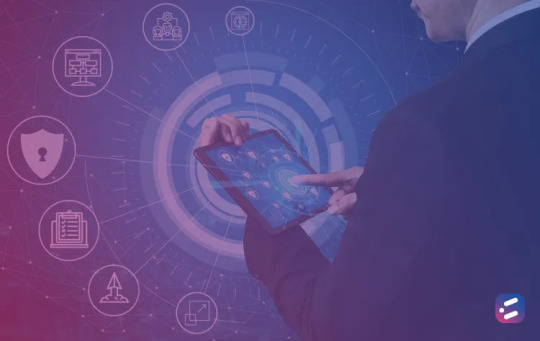
IT services and applications require third-party audits as a checkpoint to validate their security, performance and operational parameters. So, has your app been audited by a neutral third party yet? If you have an audit coming up, it’s best to go into it well prepared.
What can you expect during an app audit?
Third party auditing firms generally begin by asking a set of questions, then review documentation and source code, and study the project’s issue tracker. Once this is done, there’s a good chance that a second round of review questions may need to be asked.
Related articles
Service Mesh: The best way to Encrypt East-West traffic in Kubernetes
How does a No-Code App Builder help enterprises?
The questions asked are usually focused on improving understanding of the software and its architecture, and the process used to build the software.
Here are the areas that an application audit process usually covers, and the questions you are likely to be asked during the process.
1. Process
This relates to the application development and release process used while building the application. Questions you may be asked include:
What development process was followed — was it Scrum, Agile, or an ad-hoc process?
What were the code review practices used?
What was the application release process followed?
What were the development, testing and production environments used?
2. Technologies
This relates to third-party software or systems used. Likely questions include:
List out the third-party software or systems that have been used in the application
How do these systems interface with the application?
3. Team
The audit team is likely to assess the competencies of the staff against the needs of the audit.
List the names and roles of the team members, stakeholders, and development team
How many man hours per week for each development team member is allocated to this project?
4. Technical Design
The Technical Design Document (TDD) for the application is studied here, based on which specific queries are raised.
Here are some of the more general questions to be prepared for, while other questions would be specific to your application:
Can you provide a high-level enumeration and description of the entities in your schema and services architecture?
Is there a source code repository that holds SQL scripts?
5. Architecture
Issues related to application architecture are addressed to identify complexity and risks. Some questions you should expect include:
Are there any parts of the application that have highly complex architecture?
What are the storage systems and indexing solutions in use?
Is there any communication or integration with other in-house systems?
6. Testing
Here, automation in the testing process, and the QA environment used, are the main focus. Likely questions include:
What are the testing processes and tools used?
Is automated testing in use?
7. Deployment
This relates to the deployment of the application, back-ups, monitoring and so on. Here are some questions that may be raised:
How are deployments performed?
What backups are created and maintained, and where?
What kind of monitoring and reporting setup has been configured?
How will new versions or upgrades be deployed?
Has a deployment architecture diagram been prepared?
What type of maintenance is expected after deployment?
8. Scalability
The scalability of the application in order to effectively serve its purpose for its users is examined here. Likely questions include:
Are there any known performance or scalability concerns?
What is the size of the target audience or audiences?
What usage volume and data volumes have been tested to-date?
How much “headroom” does the deployment environment have given target data and usage volumes?
9. Security
Data security, privacy and protection from cyberattacks are key to any technology product. Some questions you can expect:
Does your application integrate with the enterprise identity and access management solution?
What password policies, in terms of password strength, expiration, reuse and frequency of change, are in place?
Is password transmission and storage encrypted and unviewable?
What functionality is available for remote access and support?
Does the application encrypt data before sending it over the open network? What encryption standard is used?
What additional security controls are available to mitigate the risk of malware and malicious code?
Have application security controls been tested by a third party?
An audit is an important rite of passage for a new application, and having an app that checks most if not all the boxes can be a major weight off your shoulders! At CloudNow, we follow industry-best processes, leading tech stacks and the best tools on offer, not to mention we have experienced and cleared numerous audits of our customers’ applications. So talk to us today to see how we can help you build your app the right way, and sail through the audit process.
#applications#Application Modernization Services#web application development#application development#application#cloud advisory service#cloud migration strategy#cloud services
1 note
·
View note
Text
10 Tips to craft a more SEO-friendly site
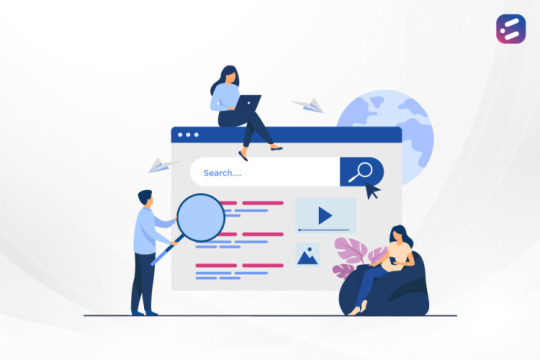
How many SEO experts does it take to change a light bulb, lightbulb, light bulbs, lamp, lighting?
Jokes aside, your website is your store, your business, and your lifeline. And its very existence depends on one little acronym – SEO, or Search Engine Optimization. There are three factors that contribute to your ability to build SEO-friendly websites:
Website design
Content
Competition
Your SEO strategy needs to help you tick each of these boxes. Here are some tips to build an SEO-friendly website.
It all starts with the algorithm
Your SEO strategy must keep pace and align with the ever-evolving requirements of search spiders. The algorithms keep changing, so tie up with the right strategist to help ensure your SEO plan is dynamic.
Create content that engages
Reaching a wider audience and ensuring they spend more time on your site is a core element of the SEO strategy. You need to make your users want to share your content or page. Increased engagement means better rankings and more organic traffic directed to your site.
Make content easy to find
During development, did your web application development services provider prioritize easy, natural, and seamless navigation? This includes easy access to content for your users with one click, or two at most, through well-considered navigation planning. And don’t forget search engine spiders need to find and index your content easily too, which is where sitemaps are important.
Who’s creating your content?
Content created and optimized by AI is an SEO trend that allows for faster and more relevant content creation. But it’s a thin line you’re walking here – simply generating content can be detrimental rather than productive, and humans still need to play a role in evaluating and editing content to ensure originality and relevance.
Show and tell
When it comes to images and video, show, but don’t forget to tell. In other words, caption all images and videos. This is an often overlooked but winning SEO strategy, ensuring search spiders capture information that would otherwise not be visible to them. Use relevant keywords here to ensure photos and videos rank during organic searches.
Keeping it fresh
As the saying goes, content is the reason the search began in the first place, so keep adding fresh content regularly. Replace or renew older articles with newer content and presentation. Do whatever it takes to give your audience a fresh feel.
Fast and light
A lighter website loads faster. You don’t want to annoy a visitor with a picture-heavy slow-loading page, just as you don’t want them to be intimidated by content that is confusing or difficult to understand. Keep it simple, keep it light.
A big first impression
Your website’s domain name is also an important SEO factor. Your domain name needs to be SEO-friendly and reflect industry perception so that every time a visitor looks for a particular service, product, or requirement, your site shows up. Tip? Choose a domain name that allows you to stand out in the industry.
The path to success
The URL paths of your pages are important for search engine performance too. Search engines rank equivalent pages with human-readable, SEO-friendly URLs higher than machine-readable URLs. So website.com/page-name is far better than website.com/index.php?p=1532&id=837
Improve your website, off your website
One of the most important pointers in SEO strategy is to ensure that you connect with the audience and the best way to do this today is through social media. Social media helps direct more traffic to your website, resulting in enhanced visibility.
The right SEO strategy can provide a great ROI as it leads to higher ranking and improved engagement. Looking for web application development services that take SEO strategy into account from the ground up? Talk to us!
#seo#search engine#cloud migration consulting#cloud migration service#cloud services#cloud service providers#Business Services#application development#applications#web application development#Application Modernization Services
1 note
·
View note
Text
Why use VR in soft skills training?
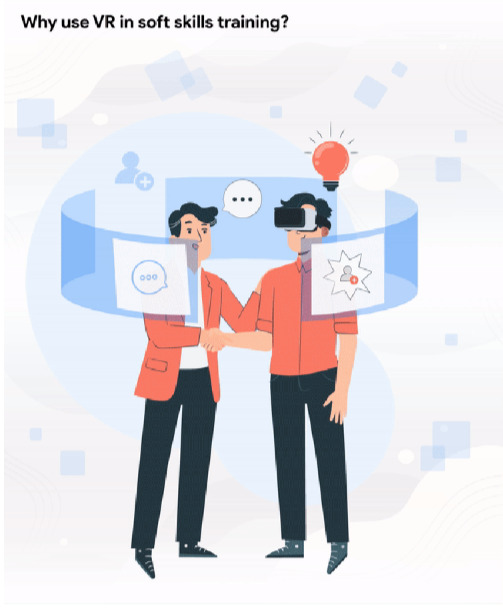
A study on the skills gap in America found that “59% of surveyed hiring managers and 89% of executives reported difficulty recruiting candidates with the requisite soft skills”, while broad industry trends show demand for lower and lower training costs. However, many businesses find it a challenge to provide soft skills training to their employees. In a hybrid work environment, employees don’t always have access to in-person instruction — often considered essential for soft skills training.
The benefits of virtual reality (VR) in soft skills training
A PwC study found that “VR-trained employees [being trained in soft skills] were 275% more confident to act on what they learned after training — a 40% improvement over classroom learners, and a 35% improvement in comparison to e-learners.” This is partly because VR immersive learning solutions allow corporates to create realistic training simulations in which the learner interacts with virtual customers, colleagues, and other stakeholders in a controlled environment.
Related articles
Is Virtual Reality the right technology for your e-learning project?
Can the metaverse’s immersive learning fit in the palm of your hand?
Since these are simulations and no real-world consequences attach to failure, HBR argues that “VR simulations can provide a low-pressure way to practice high stakes conversations.”
Let’s look at 4 great ways to apply VR to immersive learning for soft skills training.
On-the-job training
Training on soft skills-intensive jobs such as customer support and sales are done most effectively using VR immersive learning solutions. Employees can participate in realistic roleplays and gain low-stress, repeatable practice time as well as real-time feedback — without risking client relationships. An effective salesperson or customer support executive needs confidence and comprehensive product knowledge. Using immersive learning, they can repeat similar scenarios multiple times to learn how to identify cues, promote the product effectively, and address objections.
Onboarding
It’s tough to explain the values and culture of an organization to a new employee, especially when they’re interacting with the company entirely virtually. With VR, you can provide a realistic experience of the workplace. Offer a first-person view into the role and the work environment, and an immersive look at the company’s culture, by creating multiple scenarios and avatars of several key employees and managers. Such early immersion leads to higher employee retention.
Diversity, equity and inclusion (DEI) training
How do you help your employees conform to your value of inclusivity at the workplace? Immersive learning allows you to create realistic scenarios where diverse employees interact, presenting both inclusive and non-inclusive behaviours. By interacting with multiple such simulations, it’s easier to identify questionable behaviours and unconscious biases.
Handling stress
Some situations, such as restructuring, angry or unhappy customers, or team conflict, are quite stressful. To navigate them successfully, employees need to build emotional resilience, empathize and learn how to diffuse the problem. Through roleplay from both sides — for example, in a restructuring scenario, the learner could roleplay as both the HR manager and the employee — learners begin to empathize better, identify stress markers and learn how to de escalate.
As remote working and learning become more common, we believe that VR immersive learning solutions will gain popularity for soft skills training. Do you agree?
#soft skills#VR immersive learning#AR immersive learning#virutal learning#AR immersive learning solutions companies#Ar immersive
0 notes
Text
Think Cloud; Think Google Cloud Platform
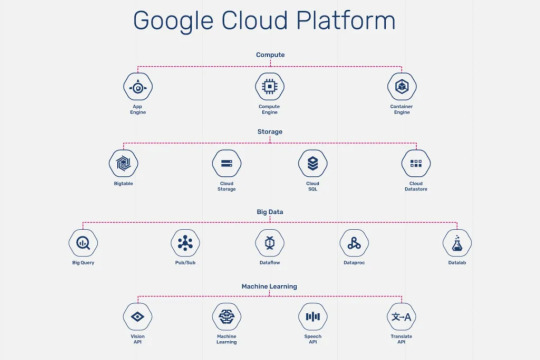
Google Cloud Platform is Google’s suite of public cloud computing services for compute, storage and application development that run on Google Cloud. Google Cloud Platform services can be used by cloud administrators, IT professionals and software developers over the internet or through a dedicated network connection.
Here are five reasons to choose Google Cloud Platform:
Related articles
A guide to Cloud Cost Optimization with Terraform
What if we told you there are ways to minimize cloud service costs?
1.Big Data Advantages
Google Cloud Platform comes with a slew of big data technology innovations and services and frameworks for cloud data warehousing, advanced machine learning, and visual analytics, along with intelligent data processing and data preparation. These serverless data analytics solutions have the power to generate accurate insights that are capable of transforming the future of business.
2. Universal Network
According to Google, they have fiber optic cables laid even under the Pacific Ocean! Google’s network, therefore, delivers quickly and consistently, in addition to being extremely scalable.
3.Reliable Security Model
Perfected over a span of 15 years, Google’s security model — that is used for Google Apps — is exceptional. The same security model is also used to protect applications and data stored on the Google Cloud Platform.
4.Billing by the Second
With the Compute Engine services of GCP, billing is calculated per second of usage, so you don’t have to pay for what you don’t use
5.Good for the Earth
As stated by Google themselves, data centers used for the Google Cloud Platform use only half as much energy as consumed by a typical data center. Wherever possible, Google also ensures the use of renewable energy.
As a Google Cloud Partner, CloudNow is equipped with the expertise to help you make your move to the Google Cloud Platform. Get in touch with us today!
1 note
·
View note
Text
Miscommunication: The bane of Project Management
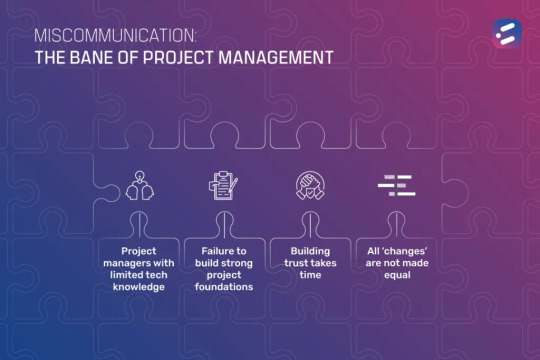
Most tech projects involve two parties — a client, and the technology or software development partner they choose to work with on the project. Such projects are often subject to gaps in communication and understanding between the client-side project manager and their development partner’s team. These gaps can cause friction, which can balloon into real issues and delays. Plug them at the beginning, to ensure that your tech development project goes smoothly.
Here are some of the common gaps in project management on a tech project, and how you can address them.
Related articles
Service Mesh: The best way to Encrypt East-West traffic in Kubernetes
How does a No-Code App Builder help enterprises?
Project managers with limited tech knowledge
Client-side IT project managers aren’t always fully aware of what goes into building tech products. This is to be expected — they aren’t subject matter experts, nor do they work directly with the programming languages and platforms that their agency counterparts do.
However, since the client’s project manager may not completely understand the details of the project, this can cause gaps between client and dev partner. The same points may need to be clarified multiple times.
Managers may believe that they are more informed than they really are, as a result of which they refuse to be educated on the subject by their partner. Misunderstandings arising from this kind of mistaken belief can result in unrealistic client expectations, or over-commitment by the partner under pressure.
Failure to build strong project foundations
The initial data gathering, discovery, analysis phase is the most important, as that’s when the foundation of the project is created. If this takes inordinate time, the project can get stuck in a never-ending loop as the project manager keeps seeking inputs and approvals from all internal stakeholders! Worse, if it takes inordinate time, this can result in a rush during the actual development process. When goals are set incorrectly, on the other hand, it can cause cascading issues.
Your development partner will ask you for goals, KPIs and KRAs, but you may not know the answer — and you may not know whom to ask! In such cases, project managers may take a long time to revert, which further slows the project in the early stage, resulting in rushed work towards the end of the development.
Naturally, a dev partner wants to support their client to complete the project successfully! They often try to paper over the cracks by proposing project targets from their own end. This can set the entire project on the wrong foot.
Another key area where building a strong project foundation is vital is in the case of app modernization projects for legacy applications. In such projects, an existing app is already delivering on specific business objectives, works with certain dependencies, and offers functionalities to address a specific set of requirements. If a project manager is not able to correctly and comprehensively communicate about the intricacies of the legacy system, this may in turn affect feature releases and key deliverables defined for the modernized application.
Building trust takes time
Client expectations of time and budget are often unrealistic. This could be because:
They are afraid that if they show any relaxation, they could be unnecessarily billed by the agency
They have “heard” that it should be faster and/or cheaper
They want to plan based on business goals, not based on development time needed
Your partner, in almost all cases, is looking at building a strong long-term relationship with you. They know the market reality and the actual costs that go into project development.
At the same time, the risk due to change management is considerable. So, in some cases, larger software companies do pad their fees and timelines. It is possible that this may result in large, bloated contracts. However, smaller agencies are more focused on building and maintaining relationships in the long term, and cannot risk losing a contract due to bloated cost estimates. In either case, ask for transparency in quoting and work towards building the trust with the partner and your stakeholders.
All ‘changes’ are not made equal
As a client you may, for instance, value a change that you can see — a UI/UX change — more than a “minor” change on the database. However, database changes are complex and time consuming — much more so than frontend changes. If you are not aware of this fact, you may expect that the backend change should be completed much faster than the frontend change.
As another example, imagine that, once the timeline and budget are finalized to your satisfaction, the partner comes back to you with a query, needing additional input on the project. It may take some time for a new project manager to share this information. However, since the final delivery time is fixed by external factors, this eats into time available for final project completion.
As a result, your partner may not be able to meet the delivery date originally committed. This may cause a breakdown in trust, and a belief that the development is taking too long to complete, when in fact, there’s just a mismatch of ideas and understanding.
Though they are heavily dependent on their tech partners, clients naturally actively participate in, and even drive, timelines and costing. However, when this happens without an objective baseline for comparison, or without sufficient technical knowledge, it can cause avoidable friction. Over time, this can create mistrust, with the client feeling like they’re being billed without justification, which in turn makes the development partner feel that their integrity is under question. Before it reaches that situation, it’s important for both sides to take a step back at an early stage to smooth over and secure the relationship.
Plugging these gaps
When you’re not fully aware of the technical details that your partner is sharing with you, ask for more information. Similarly, ask for an explanation when you can’t understand why the estimated cost or time is higher than expected.
Of course, this is a two-way street and the shortcoming can equally be at the tech partner’s end, by failing to communicate sufficiently or by incorrectly assuming that the client is aware of certain technical concepts. If your partner is not open to frank and clear discussion, that’s a cause for worry and a potential reason to look elsewhere.
If your business requirements demand faster delivery than your partner can commit, do sit down with them to discuss options. Your partner may be able to add extra resources for the urgent project. Alternatively, you could plan to create an MVP (minimum viable product) instead of a full app launch, or simply accept some technical debt which could be resolved later.
In our experience, an approach of open communication, transparency and trust from both sides can help resolve most project management challenges. At CloudNow, we believe that every client is a potential long-term partner, and we work to build lasting trust and relationships with each.
#application development#mobile app development#web application development#app development#cloudComputing#cloud tech solutions
0 notes
Text
5 ways to optimize your gamification strategy

What’s the benefit of gamification? It acts as a system of extrinsic motivators. Extrinsic motivation occurs when the learner is motivated to perform an activity to earn an external reward or to avoid punishment.
By optimizing your gamification strategy, your learners are likely to feel more motivated, and therefore more engaged in the learning process. Here are 5 things for you to consider as you build your strategy.
Related articles
Reducing cognitive overload through gamification
How do you successfully incorporate gamification into your e-learning?
1. Quality, not quantity
When it comes to gamification, more is not necessarily better. “Greater numbers of gamification mechanics does not necessarily contribute to better learning performance,” says a recent study. For that reason, it’s important to undertake regular testing to identify which elements and working and which aren’t, to design sticky gamified modules that are optimized for your learner base.
2. Managing emotions
Selecting the right kind of gamification strategy is very important. There is a risk of negative reaction to ‘completion-contingent’ rewards, as learners perceive that they are being controlled by the game and its developers. ‘Performance-contingent’ rewards better facilitate learning and motivation since learners are rewarded for competence. According to cognitive evaluation theory, this “negates the controlling effect, thereby positively influencing learners’ motivation”.
3. Clarity and communication
Effective rewards “are expected to facilitate positive game experiences by motivating learners to actively participate in learning tasks to obtain the rewards”. The first step, therefore, is to clearly communicate the rules and objectives. What do you need to do to earn points? How do you interact with the game to learn and grow? Are there real-world rewards, and if so, how do you win them?
Another important aspect of gamified system communication is regarding learners’ performance in the short and long term. By regularly receiving communication and clarity on their position, learners are encouraged to update their goals and gain a sense of achievement.
4. Regular updates
Intrinsic motivation of learners involved in e-learning can fall over time, as compared to that of traditional classroom learners. This is partly because the impact of innovation and novelty reduces with time. That’s why it’s important to keep gamification strategies and rewards new on a regular basis.
Different learners have different reactions to rewards, it’s important to study their reactions and tweak strategies accordingly. Gamification’s impact varies with the learners’ demographics and personalities, as well as variations in the reward strategy itself. It’s therefore advisable to take feedback from your learners on the effectiveness of the gamification mechanism and make regular changes to suit your unique audience.
5. Balancing anxiety and reward
While gamification is a source of extrinsic motivation, it can also cause anxiety in some learners. A study showed that a forfeit-or-prize gamification strategy tends to result in higher levels of anxiety. The most important aspect of reward strategy design is therefore to balance between rewards and learning anxiety. By integrating personalized assistance and providing scaffolding in educational games, you can moderate anxiety.
Gamification is complex, and strategy design is not a one-off exercise. Work with an e-learning expert to create and continually optimize your gamification design strategy. Work with Hornbill FX.
0 notes
Text
The Challenges of Choosing a Hybrid Cloud
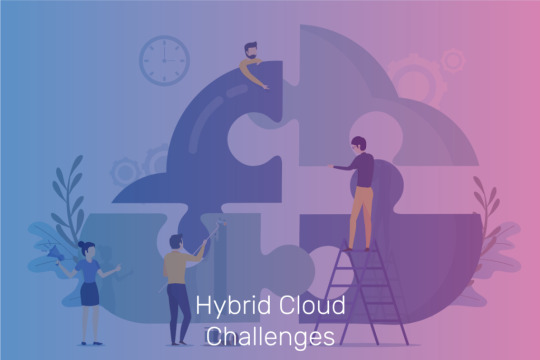
An increasing number of organizations have taken to cloud computing in the last few years. Many of them have also begun discovering the many benefits of opting for a hybrid cloud — a customized cloud environment made up by combining the right mix of public and private clouds that best suits the organization.
While the right choice of mix in a hybrid cloud can ensure the best of security, accessibility, scalability, and cost-effectiveness, the journey to this perfect hybrid cloud environment is not free from challenges. If you have decided to make the move to a hybrid cloud, here are a few challenges you are likely to face before and after your cloud migration:
Related articles
A guide to Cloud Cost Optimization with Terraform
What if we told you there are ways to minimize cloud service costs?
Finding the Right Cloud Providers
First and foremost, it is a challenge to arrive at the right mix of public and private clouds that will ensure optimum benefits. A thorough infrastructure evaluation and analysis of performance data, along with monitoring of RoI is essential to make the most of the hybrid cloud deployment.
When it comes to a hybrid cloud infrastructure, it is also important to select cloud providers who can:
Design and implement virtual private cloud networks (VPC) with a defined range of IP addresses
Set up options for virtual private network (VPN) connection that is compatible with available hardware or software
Establish a direct connection between your private data center and VPC
Ensure connectivity between the on-premise data center and cloud infrastructure
Finally, it is also important to ensure that cloud providers have all the required certifications to comply with policies and regulations. You may require the support of a cloud consultant to finalize on the right cloud providers for your hybrid cloud.
Implementing an Interruption-free Migration
During both stages of the cloud migration process — server migration and data migration, you are bound to face some challenges. Remember to consider time-to-market, application modernization needs, and availability of resources when planning your implementation strategy.
Depending on the volume of data to be migrated and the business downtime that such a migration can cause, you may face challenges during the data migration process as well. With the support of a cloud migration expert, however, you can overcome these challenges with minimal disruption.
Managing Multiple Cloud Providers
Because the hybrid cloud is all about the right mix of public and private clouds, it also involves the need to manage these multiple cloud providers and their services. With organizations today opting for as many as five clouds to make up their cloud environment, it can become challenging to manage all of them, their related costs, and more.
You will also need to ensure that there is continued connectivity and communication between the different cloud networks you have chosen. This is why, if you are going in for a hybrid cloud, it is a wise idea to outsource your cloud management to a managed services provider.
Embracing Identity and Access Management
In a hybrid cloud environment, with multiple applications of varying security and administrative features, it can become overwhelming for users and administrators alike to keep up with identity and access.
A way to counter this challenge is by adopting an identity and access management (IAM) solution that will provide a single sign-on and other features that will bring all applications under one common platform.
Managing Costs
While one of the primary reasons for choosing a hybrid cloud is for optimizing costs, improper management of billings from different cloud service providers can have the reverse effect. If not effectively controlled and monitored, cloud space wastage can happen and costs can spiral out of control.
Despite the challenges, migrating to a hybrid cloud environment is often a good idea. All the challenges before and during the cloud migration can be overcome with the help of a cloud consultant and the post-migration management can be easily outsourced to a trusted managed service provider.
At CloudNow, we don many hats — of cloud consultants, cloud migration experts, IAM solution providers, managed service providers and more. We have the expertise to help you choose the right cloud platforms and services, implement a seamless cloud migration and assure you of smooth, worry-free management of your hybrid cloud. Get in touch with us to know more.
1 note
·
View note
Text
Points To Consider While Building An Enterprise Application

Enterprise applications, if built right, can give an organization an edge over the competition in its industry. Enterprise applications have also proven to increase the efficiency and productivity of an organization’s employees for internal operations. Little wonder then that the enterprise application sector has received a boost, with several companies infusing billions of dollars in developing their own applications. Whether you build an app for internal use or for customer interactions and operations, there are a few things you should consider before building your application the right way.
Related articles
Service Mesh: The best way to Encrypt East-West traffic in Kubernetes
How does a No-Code App Builder help enterprises?
Budget
Your enterprise application’s functionalities, capabilities, and in turn, usability are predominantly affected by the budget allocated towards building it. It is also important to note that spending towards an application doesn’t stop with just building and deploying it. Maintenance and updation of dynamic apps can cost thousands of dollars every month. Therefore, ensure that you are financially insulated before committing to giving your customers or your employees a dynamic application.
Target Audience
Accurately identifying your target audience and creating multiple user profiles can help you identify the various aspects of your application which need fine-tuning. Depending on your target audience, you can also split the budget into segments and use the available funds optimally. Targeting also allows you to prioritize the device the app needs to be developed for.
Backend and Analytics
Although most apps are API-based, if you’re looking to build a straightforward and simple application without customizing it much, a local database might suffice to run the application. It also helps to map out the key performance indicators and other analytical trackers before creating the application. Additionally, the data by itself might be useless if you don’t get a data scientist or data analytics program to give you actionable insights with the gathered data.
Enterprise Application Development Company
If you have a dedicated IT team to build your enterprise application, it makes sense to go all-out and optimize the app for all devices and platforms. However, if you are a small or medium sized business, and are looking to outsource the application development to a third party app development company, ensure that their deliverables contain everything you expect, including committed technical support on a retainer basis with an SLA.
At CloudNow Technologies, we provide application development services of any scale because we understand that every company needs a competitive edge to stand out from the crowd. We offer comprehensive consulting services to understand your requirements and build exactly what you are looking for. To know more about our Application development services, get in touch with us now.
#Cloud Technology#cloud services#applications#app developers#app developing company#mobile app development#app development services
0 notes
Text
Moving SAP to the Cloud: 7 Essential Stages of the Migration Process
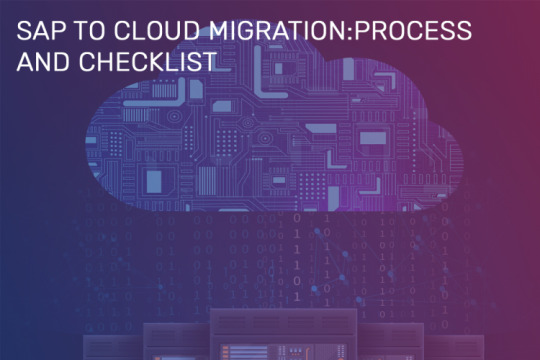
SAP is an enterprise-grade ERP that covers almost every aspect of business management. Migrating your SAP workloads to the cloud can help your enterprise become more agile, expansive, and innovative.
SAP-to-cloud migration is a complex process that may involve significant hardware and software changes. Here’s our 8-step process to help you navigate your way through migrating your enterprise’s SAP to the cloud.
Related articles
A guide to Cloud Cost Optimization with Terraform
What if we told you there are ways to minimize cloud service costs?
1. Assess your SAP environment
In order to achieve a successful IaaS (Infrastructure as a service) cloud migration, the complexity of your SAP workloads should be properly assessed, as should its underlying infrastructure, the requirements for seasonal elasticity, the size of each workload and related databases. Streamline, integrate, and optimize SAP workloads that are running on old hardware, that are seldom used, or are used by only a few people.
2. Define and establish the migration-architect role
Migration architecture involves planning, structuring, organizing, and completing all aspects of migration to the cloud. Before you begin the process, the migration architect role should be properly established; the core responsibility is to define necessary parameters in order to ensure the cloud migration is successful. The role also includes designing strategies for data migration, defining cloud solution requirements, determining migration priorities, and production switchover mechanisms.
During the course of a large-scale migration project, many technical plans and decisions are to be made; having a migration architect who understands and is responsible for all aspects of cloud migration is crucial for the success of the project.
3. Evaluate costs
Enterprises gravitate towards the cloud because of the promise of cost-efficiency. Cloud migrations help you bypass costs of maintaining hardware and IT staffing expenses. The financial benefits, however, differ for each application. Costs must be carefully evaluated and accounted for before the cloud migration process is in place. This would help your enterprise create a more effective and long-term cloud strategy.
4. Test your applications
Enterprises need to ensure that their SAP applications are completely functional before migrating to the cloud. Applications that run smoothly on dedicated servers prior to migration need not necessarily work at the same level of efficiency on cloud-based solutions. Migration can lead to instability, breakdowns, and performance degradation in legacy systems. Pre-migration testing is imperative; it helps you identify issues that must be resolved before a full-scale migration.
5. Migrate SAP to the Cloud
You need to have a detailed understanding of cloud migration strategies and how they can be successfully applied to your environment. Consider moving low-risk systems to the cloud. Building low business impact systems in the cloud can help you save money and help you optimize your new production environments.
6. Optimize SAP in the Cloud
Technology advances should be monitored. By properly integrating your SAP data with the cloud platform, you bring innovation and intelligence to your operations. Stay updated on new capabilities to receive the best possible benefits for your business and design for high availability in your production systems.
7. Manage SAP on the Cloud
Protecting sensitive data and the enterprise’s overall data security should be your top priority. When migrating SAP workloads, consider the various aspects of compliance and data security with regard to hosting data in the public cloud. Meet all application and data legal requirements through proper planning and execution. Work with the stakeholders and data owners for each application to comply with corporate and legal requirements.
Simple as the procedure for successful cloud migration may seem, the intricacies involved in each of the above stages can be quite complex. At CloudNow, we ensure that the migration of SAP workloads to the cloud and the alignment of applications is seamless. Our robust skills ensure that movement to the cloud is hassle-free, comprehensively covering data mobility, data security, and a true DevOps approach to cloud migration and deployment. Successful SAP to cloud migration requires a coherent long-term strategy and effective management of workloads on the cloud: CloudNow is your reliable solution.
To know more, get in touch with us!
#Cloud Migration#cloud migration service#cloud migration services usa#cloud migration consulting#cloud services#sap#cloud migration strategy#application development#DevOps#devops service#DevOps service providers#devops services company
1 note
·
View note
Text
DevOps Deepdive — Value Stream Mapping

Even if your organization operates based on DevOps for all its software development, it does not mean that the operation cycle will always be free of bottlenecks. Value stream mapping is a flow chart based analysis system which helps you identify the areas where challenges exist in your DevOps practice. It takes into account the complexity of the entire system, including operational and information flows, and allows you to map value adds from a customer’s standpoint. This way, you identify what efforts of yours are being wasted and what contributes most to your customers.
There are several ways to scale and optimize DevOps across your organization. Value Stream Mapping allows organizations to scale DevOps adoption without compromising on the quality of the software product being built.
Related articles
What is Sprint Review ‘participation’? 3 Reasons you need to know, if you don’t!
DevOps and the art of keeping secrets
Why does DevOps need Value Stream Mapping?
Helps identify pain points
Helps identify errors and bugs
Creates better visibility and traceability across the project
Eliminates wasteful processes
Illuminates automation opportunities
Emphasizes on data-driven results
How should VSM be used?
Initially, you could start out by bifurcating the tasks moving between your development and operations teams and measure the time being spent on each task. In addition to this, you can also visually group the tasks based on whether they belong to the SDLC, QA, release, or feedback phase.
The key performance indicators used in most VSM diagrams are value added time and lead time. However, we suggest looking at your project from the customer’s perspective and coming up with your own metrics to define success and failure. Value added (VA), is the amount of time your team actually spends on a task — this does not include the time the task spends in the queue. Lead time includes value added time as well as the time a task spends in the queue.
Once you map out your DevOps efforts in this manner, you can easily and efficiently identify waste, bottlenecks, and other pain points. It is also possible to highlight parameters like the individuals working on a task and the tools used, etc. to identify what takes up an unjustifiable amount of time — all leading to continuously improving DevOps results. You can also share the results of your findings with your team to guide them on where they can work more efficiently.
At CloudNow Technologies, our deep understanding of DevOps helps us to deliver a seamless software development experience. To know more about our Devops services and how we can apply DevOps to help your business, please get in touch with us now.
#devops service#devops services company#DevOps service providers#devops services in usa#devops services#cloud computing service provider#cloud companies#cloud consulting service#Cloud Consulting Services
0 notes
Text
Can the metaverse’s immersive learning fit in the palm of your hand?

When you hear ‘metaverse’, you may imagine a virtual world managed, maintained, and accessed by complex VR hardware. Is it possible for this fast-growing e-learning trend to be compressed into a handheld mobile device? We explore this possibility in this article, but before we get there, …
Why is a mobile metaverse important?
Mobile internet is the wave of the present, with mobile internet traffic making up 59.72% of total global online traffic. It’s a central part of Web 2.0, the current generation of the internet. And for that reason, it’s important to leverage this ubiquitous device and its usage as we enter the next phase of the internet.
Related articles
Is Virtual Reality the right technology for your e-learning project?
Driving behavioral change through experiential learning
The mobile metaverse immersive learning experience
Is it possible to access an immersive universe from a handheld device? Does it have the computing power? Is it big enough?
On the one hand, over the past few years, virtual reality (VR) has been evolving rapidly — from a technology that was only suitable for desktop applications to one which works on mobile devices with headsets. Some schools are even investing in VR immersive learning, using mobile devices and virtual reality headsets. So yes, it is possible to miniaturize the VR experience to suit a mobile device.
But that’s only one part of the story. Why confuse immersiveness with expensive equipment that often puts the entire experience out of reach of learners?
At Hornbill, we look at immersive environments as an advanced form of communication that create a ‘real’ experience for the user. But that doesn’t mean this immersive learning technique needs to be powered by VR or AR technology.
Our view of metaverse immersive learning — three-dimensional worlds through which you can freely navigate and with which you can freely interact — is not limited by the factors that put VR immersive learning out of reach. Such 3D graphics can be accessed effectively by almost any mobile device, without requiring any additional hardware — a huge advantage over alternative concepts of the metaverse.
Mobile learning and immersive learning are the future of e-learning — meaning that getting mobile immersive learning techniques right is probably the most important thing you can do for your next online training project.
Before you get started on your next project, consult the experts first. Talk to our team at Hornbill FX today to learn more about your options and to discuss how to get started.
#hornbillfx#elearning development#custom elearning development#elearning solutions#eLearning#elearning development companies#immersive elearning#immersive elearning solutions companies#immersive elearning solutions#VR immersive learning#VR immersive learning solutions companies in usa#VR immersive learning solutions companies#VR Immersive
0 notes
Text
The Intelligent Cloud: Bringing Together Machine Learning & Cloud Computing

Machine learning (ML) is a subset of artificial intelligence (AI) and comprises a set of technologies that utilize a large number of data sets for training and testing. Although the concept of machine learning itself isn’t new — the term was first defined in 1959 — it has largely been out of the reach of organizational budgets.
Today, with machine learning services becoming an offering of many public clouds, it has become both affordable and accessible. Google Cloud Platform, Amazon Web Services, and Microsoft Azure, all offer ML with such ease of use that it no longer requires a team of data scientists to implement.
Related articles
A guide to Cloud Cost Optimization with Terraform
What if we told you there are ways to minimize cloud service costs?
The coming together of machine learning and cloud computing has given rise to “the intelligent cloud” because ML has given birth to a number of new cloud services. A few of them are listed below:
Cognitive Computing
Cognitive Computing enables apps to see, listen, talk, and make decisions with the use of ML technologies.
Business Intelligence (BI)
Cloud computing has greatly improved business intelligence — with intelligent insights and accurate forecasting — by merging BI platforms with ML-based tools.
Internet of Things (IoT)
Data-driven platforms on the cloud have made it possible for data to be captured from various sensors in large quantities, making IoT more intelligent.
Bots-as-a-service
Messaging platforms can now be integrated with bots who can respond to website visitor queries, and converse with them.
Personal Assistants
Voice-based personal assistants like Alexa, Siri, Google Assistant, and Cortana are all powered by machine learning to offer customized experiences for users.
Machine learning can now be easily leveraged, thanks to the cloud. With its pay-as-you-go model, it becomes even more easy to experiment with various ML capabilities and scale up or down any time. And thanks to machine learning, the cloud is now intelligent — learning from the vast ocean of data stored in it and creating better predictions and, thereby, smarter solutions.
Want to adopt machine learning and make your business smarter? Ask CloudNow how! CloudNow Cloud advisory services can help you discover relevant use cases to apply ML and run workloads to make the most of your data on the cloud.
#Cloud Advisory Services#cloud advisory service#cloud advisory#cloud services#cloud service providers#top cloud service#cloud tech solutions
0 notes
Text
Understanding higher-order components in React.js
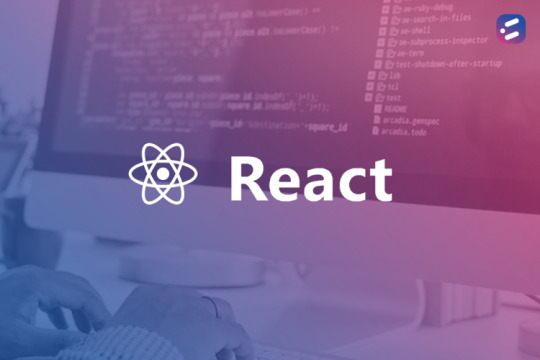
Higher-order components (HOCs) are an advanced topic in React.js, often used by application development experts to streamline the code and make the development project more efficient. A HOC is a “function that takes a component and returns a new component”. It reuses component logic and follows one of the patterns.
When do you use HOCs?
Let’s say you have a box to which you want to add an outline color. A component would perform this activity. Now let’s say you have ten similar boxes, each needing an outline color. You could hand-write code for each box, or use a HOC to create a function that provides an outline color for each.
Related articles
The JSON Data Type in MySQL: Pluses and Minuses
InfluxDB: A modern approach to monitoring IoT & System
Here’s an example of a function that creates a new component: a HOC
import React from ‘react’
const higherOrderComponent = WrappedComponent => {
class HOC extends React.Component {
render() {
return <WrappedComponent />
}
}
return HOC
}
In the above example, a higher-order component is written as a function. It takes a component, called ‘WrappedComponent’, as an argument. We have created a new component called ‘HOC’, which returns the <WrappedComponent/> from its render function.
A higher-order component (HOC) is a distinctive element for reusing logic in React components.
How do you use Higher-Order Components?
HOCs don’t modify or mutate components; they create new ones
The code can be reused as required
No side effects arise from the use of HOCs in React.js development services
What are the benefits of using HOCs?
When used properly and efficiently, HOCs are easy to handle
HOCs help to streamline the code by avoiding mutating or comoving the same logic in each component created
Using higher-order components makes code more readable and efficient
Due to its proper naming conventions, debugging becomes easy
HOCs can make your code lighter, faster to develop, easier to read and more streamlined. Still wondering how to use HOCs when using React.js development services? Speak to our team of application development experts today.
#Cloud Technology#application development#web application development#Application Modernization Services
0 notes
Text
Key Redundancies in Cloud Architecture
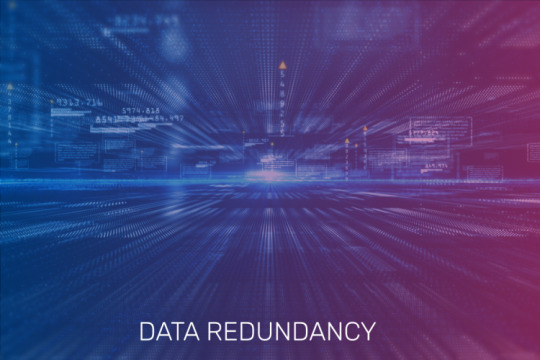
In cloud architecture, redundancy refers to backing up of data to ensure business continuity for organizations. Redundancy, if built into an organization’s cloud architecture, can ensure that companies have something to fall back on, in case of technical or physical failure. While planning your cloud architecture, consider the possible threats to your operations like natural disasters, power outages, sabotage and human error and build your redundancy plan based on that.
While storing your organization’s critical data on the cloud is secure, prolonged power outages at your service provider’s location can lead to permanent data loss. The goal with redundancy is to design an architecture which springs in, detects an error and creates a fall back route, all without human intervention.
Related articles
A guide to Cloud Cost Optimization with Terraform
What if we told you there are ways to minimize cloud service costs?
With proper planning, the cloud can facilitate the readiness required to handle any form of data failure. To effectively plan for such events, consider the following key redundancies that you need to plan for.
1. Hardware-level redundancy
Even if all your software is hosted on the cloud and all your data is stored on the cloud, the entities are still stored in some kind of hardware. And hardware might be susceptible to a fault. Therefore, it is important that you understand the fault tolerance of any hardware used by your business. Depending on how much you can spend to prevent hardware failure, you can either co-locate your devices with your cloud service provider or pay the big players like AWS or Google to build and maintain your environment. By going with either of these options, the uptime of your software in case of a hardware failure is high.
2. Process Redundancy
Another aspect to consider while designing your architecture is how different processes use or share your resources. If there is an imbalance or overload with any of the servers, a few of your critical applications might not run as per your requirements. To mitigate this problem, you can map out the various processes within your organization and match them with servers based on availability requirements. While it might be tempting to label all of your processes as business-critical, you need to understand that it can add up to increased cost because you will end up providing full redundancy for all your processes.
3. Network Redundancy
Network redundancy means establishing multiple paths to the internet if your main carrier fails or becomes unavailable. Ensure that you have a backup carrier who can handle the traffic of your network. When you sign-up with a provider, understand the service level agreements to know how any failure from their end can be handled. It is also important for you to note that a few providers use the same backbone for delivery and that only the last mile of connectivity is provided exclusively by them. In terms of redundancy, this means that if one carrier has a failure, the other one might also experience the same.
4. Geographic Redundancy
In geographic redundancy, data is replicated between two or more physically separate locations. This is to ensure that any natural calamity or physical failure which happens in one location doesn’t affect the operational flow of your business. Ensuring that a geographic redundancy plan is set up for your business is essential to safely run your operations on the cloud. In fact, network traffic can also be split between geo-redundancies for better process optimization.
At CloudNow Technologies, we come with a wide and deep level of understanding of the cloud that only a few others can boast of. We can help you plan, design, and create comprehensive redundancy plans to ensure that your business runs smoothly 24*7. To know more, get in touch with us now.
#cloud migration consulting#cloud migration services usa#cloud migration strategy#cloud migration service#Cloud Migration
0 notes
Text
The JSON Data Type in MySQL: Pluses and Minuses
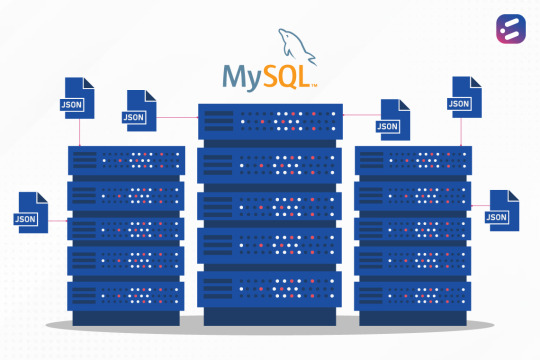
Optimizing data architecture is an important part of your application development process. Data in MySQL is generally stored in the record format, and when the data is called from the database by UI/UX or any other function, Java converts the data format to JSON before sending it to the client.
Related articles
InfluxDB: A modern approach to monitoring IoT & System
Here’s how DevSecOps is taking over from DevOps to help businesses gain an edge
Data saved in record format
Data saved in JSON format
Retrieve data faster by storing it as JSON
Conversion from row data to JSON is an extra layer of effort, and it takes more time and processing power to complete the action.
Exporting MySQL data to JSON can be done using any of the following methods:
Using the CONCAT() and GROUP_CONCAT() functions
Using JSON_OBJECT and JSON_ARRAYAGG functions
Using MySQL Shell and JSON Format Output
Using third-party software such as ApexSQL Database Power Tools for VS Code
Since version 5.7.8, MySQL has supported the JSON data type and allowed users to save in JSON format directly. However, since record format is the default, many users prefer to continue with this more traditional data format. By investing in the right data architecture services, you can optimize your data formats and data types to get the most out of your data architecture.
What is the JSON data format?
JSON, or JavaScript Object Notation, is a lightweight data-interchange format that’s similar to other data types. The storage size of a JSON document (also known as a NoSQL database) is around the same as that of LONGBLOB or LONGTEXT data.
Now that MySQL can store JSON data in binary format, the server can efficiently store, search and retrieve JSON data from the MySQL database.
When do you use it?
JSON data stores configuration data of multiple attributes. For example, let’s say you have the attributes of a customizable character in a game. One player’s character may have a hat, while another may have shoes a particular shade of red. All these data points can be captured in JSON tabular data.
How do you use it?
The syntax for a JSON column is column_name JSON. Data can be stored as JSON in MySQL by using the JSON data type.
Why should you use it?
The JSON data type provides certain advantages over storing JSON-format strings in a string column:
Automatic content validation: When you’re adding JSON data to MySQL, the database automatically confirms that the data format fits the data and doesn’t allow you to save it if it doesn’t match.
Faster data transfer: All calls from other clients require data conversion from record to JSON. Saving data directly in JSON makes data transfer more efficient. In addition, JSON can have a substantially lower character count, reducing the overhead in data transfers.
Readability: Since JSON data is saved in text format, not XML, it’s more easily readable by the human eye.
Easy exchange: JSON is helpful when it comes to data exchange between heterogeneous systems since you can also use the JSON format with other programming languages.
Potential to combine and store: JSON documents with multiple keys and value attributes can be saved in the same document.
What are the disadvantages of using JSON?
Indexing: MySQL doesn’t support indexing of JSON columns, which means that if you want to search through your JSON documents, you could trigger a full table scan. A JSON column cannot be indexed directly. However, if you wish to perform more efficient searches, you can generate a column with values extracted from the JSON column, on which you can create an index.
Limited storage: JSON documents stored in MySQL can only reach a theoretical maximum size of 1GB.
Inefficient storage: JSON could be more storage efficient. If your priority is optimizing data architecture by prioritizing storage efficiency in your database schema, you may be better off with more traditional data types such as INT, CHAR, VARCHAR, and the like.
At CloudNow, we understand that using the correct data types and formats is key to optimizing your data architecture. That’s why we stay up-to-date with the functionalities available on MySQL and the benefits of using different data types for different requirements, to provide top quality data architecture services.
#Cloud Technology#application#Application Modernization Services#web application development#application development#applications#mysql
0 notes
Text
The Time is Now: Move your ERP to the Cloud

If you have been contemplating cloud adoption but putting it off for various reasons — security concerns, apprehensions about tangible benefits, and so on — you need to see who recently moved their ERP to the cloud!
US Navy Takes to the Cloud
Related articles
A guide to Cloud Cost Optimization with Terraform
What if we told you there are ways to minimize cloud service costs?
In August 2019, the US Navy was in the news for taking the first step towards cloud migration! Data of over 72,000 users from six Navy commands were moved from an in-house ERP to an Amazon Web Services cloud system. The rest of the data — from other disconnected networks and dispersed sources — are expected to be moved to the cloud gradually, over the next two years.
The Navy chiefs said that this move is expected to increase accessibility, facilitate immediate availability, better visibility for monitoring of parts moving through the pipeline, and easier auditing and reporting. It is also expected to improve security as it will be easier to check for threats and vulnerabilities in a single system, rather than in multiple disparate locations.
Benefits and Beyond
Just as the Navy chiefs of the USA came to recognize, cloud computing comes with a number of benefits that improve overall performance and management of data. You can read more about these and other benefits in an earlier article here.
While these benefits are pretty much generic to cloud computing and can be enjoyed any time (if you’ve chosen your cloud platforms wisely), here are a few reasons why you need to move from an on-premise ERP to a cloud-based one NOW.
A number of ERP companies are coming up with updates, which require hardware updates and lease renewals. This means you will need to plan for investment, both in terms of hardware and data center space. By deciding to move to a cloud-based ERP instead, you can cut down on this capex.
The period of fear over cloud security has passed. Yes, there is the occasional news of a data breach — but people are becoming increasingly aware that there is the same amount of risk with on-premise ERPs as well. The myths about cloud security are progressively being busted and a number of security enhancing solutions are becoming available in the market. So, this is probably the best time to make the pitch and convince your organizational heads to make the transition.
Did you know that over 70% of enterprises are currently in the process of migrating their ERP applications to the cloud? To make sure you don’t get left behind, you should too!
A Word to the Wise
As with any cloud migration, ERP migrations to the cloud are not without challenges. Therefore, it is important that you evaluate your options, assess costs (both initial and ongoing), prepare a migration checklist, and plan your cloud migration strategy with caution.
If you find migrating your existing on-premise ERP to be tedious, you can also consider choosing a cloud-based SaaS alternative to replace it.
At CloudNow, we offer expert consultation and cloud migration services to help businesses leverage the cloud. If you need help with your ERP migration, get in touch with us today!
#Cloud Advisory Services#cloud advisory#cloud advisory service#erp migration#cloud migration strategy#cloud migration service
0 notes